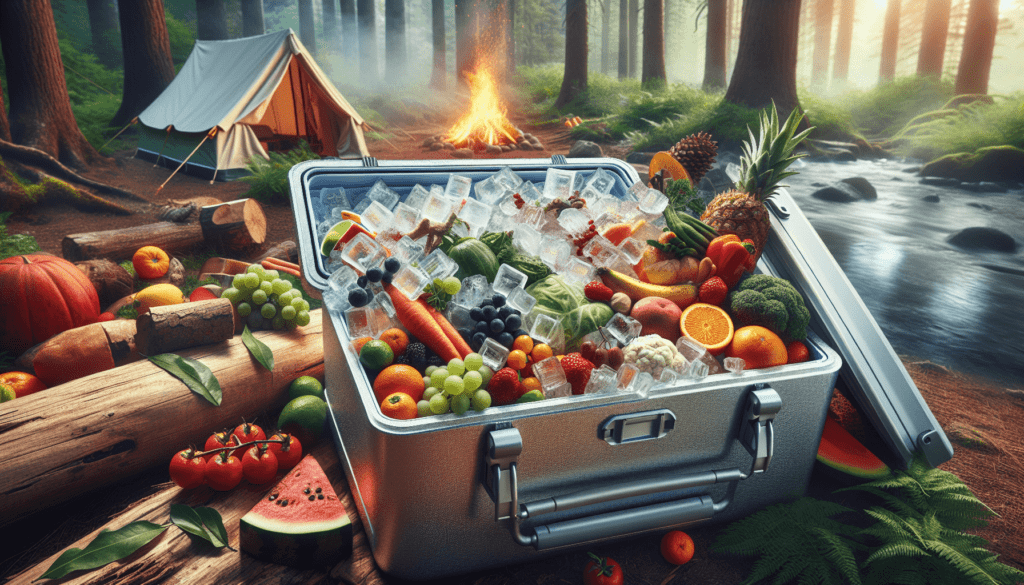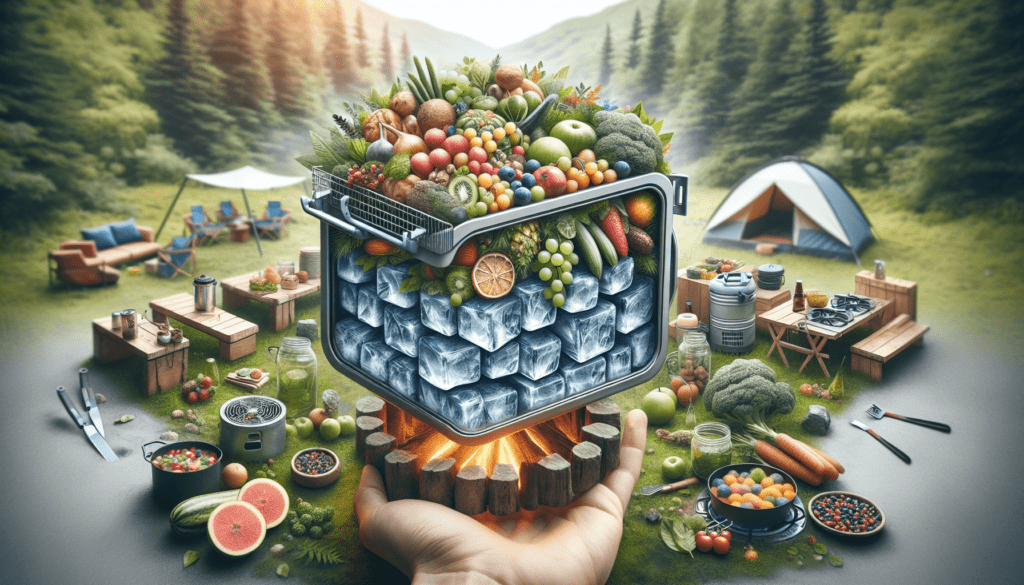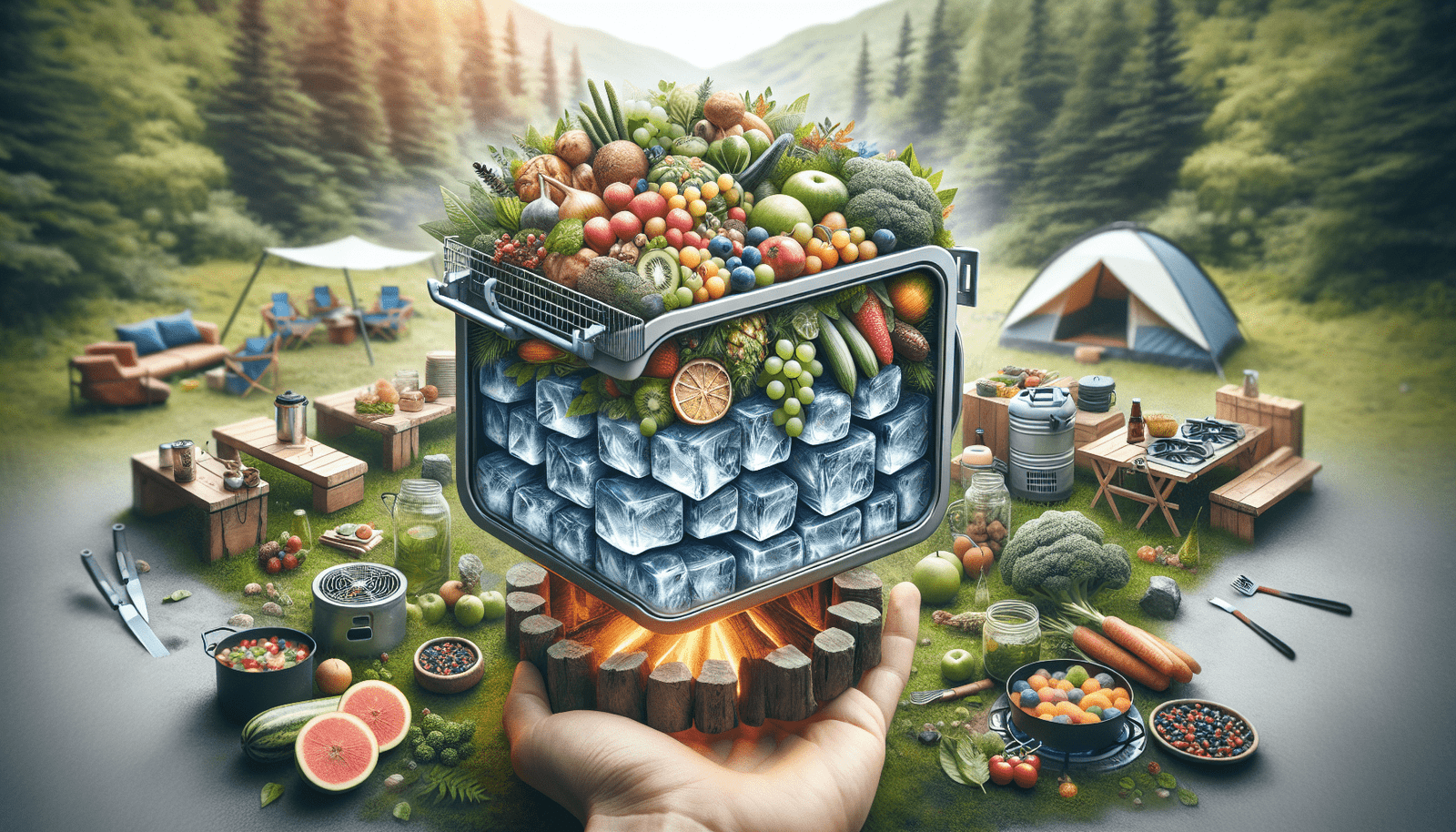Have you ever worried about keeping your food cold while camping? Whether you’re a seasoned camper or new to the great outdoors, ensuring that your food stays fresh and safe to eat is essential. In this guide, I’ll walk you through all the tips and tricks needed to keep your food cold and enjoy your camping trip without a hitch.

Why Keeping Food Cold Matters
Keeping food cold isn’t just about preventing spoilage; it’s about maintaining your health. Bacteria thrive between 40°F and 140°F, and eating food contaminated with bacteria can lead to foodborne illnesses. So keeping your food cold is crucial for safety as well as for quality.
Planning and Preparation
Understand Your Needs
Before heading out, consider how long you’ll be camping and the types of food you’ll be bringing. Different foods have different storage needs, and the duration of your trip will affect how much ice or refrigeration you require.
Make a List
Creating a list of the food items you plan to bring can be helpful. This will not only help you pack efficiently but will also ensure you don’t forget essential items. Include perishable and non-perishable items, and think about the sequence in which you’ll consume them.
Pack Efficiently
Packing efficiently can make a big difference in how long your food stays cold. Here are some tips:
- Pre-chill Items: Freeze or refrigerate perishable items before packing them.
- Pack in Layers: Keep the most perishable items at the bottom of your cooler.
- Use Separate Coolers: If possible, use one cooler for drinks and another for food to minimize frequent opening and temperature fluctuations.
Types of Coolers
Traditional Coolers
Traditional coolers are the most common choice for campers. They come in various sizes and designs, and their performance can vary based on insulation quality and ice retention.
| Feature | Description |
|---|---|
| Insulation | Look for coolers with thick insulation. |
| Capacity | Choose a size that fits your storage needs. |
| Ice Retention | Some can retain ice for several days. |
Powered Coolers
Powered coolers or portable refrigerators can be great for longer trips. They can run on battery or be connected to your vehicle’s power outlet.
| Pros | Cons |
|---|---|
| Keeps food cold steadily | Usually more expensive |
| No need for ice | Requires a power source |
Cooler Backpacks
For shorter or more mobile trips, cooler backpacks can be a versatile option. They offer easier transportation and can keep food cold for shorter periods.
| Pros | Cons |
|---|---|
| Portable and convenient | Limited storage capacity |
| Ideal for day trips | Shorter ice retention |
Ice and Ice Alternatives
Types of Ice
Different types of ice offer various benefits. Here’s a quick breakdown:
| Type of Ice | Pros | Cons |
|---|---|---|
| Block Ice | Longer-lasting | Takes up more space |
| Cubed Ice | More surface area for cooling | Melts faster |
| Dry Ice | Extremely cold and long-lasting | Requires careful handling, can be dangerous |
Ice Packs and Gel Packs
Reusable ice packs and gel packs are also excellent options. They freeze solid and can be used multiple times. Plus, they often take up less space than traditional ice and produce no water as they melt.

Packing Your Cooler
Pre-Chill the Cooler
Start by pre-chilling your cooler. Place ice packs or bags of ice in the cooler a few hours before you load it with your food. This step ensures that your cooler is cold from the get-go, helping it maintain a lower temperature for longer.
Layering
Layering your items in the cooler can significantly impact its efficiency. Here’s a good strategy:
- Bottom Layer: Block ice or ice packs to create a solid base.
- Middle Layer: Perishable items like meat, dairy, and pre-cooked meals.
- Top Layer: Less perishable items and snacks.
Use Airtight Containers
Using airtight containers can prevent spills and reduce the risk of cross-contamination. It also helps to maintain a more even temperature within the cooler.
Keep It Covered
Using a cooler cover or blanket can add an extra layer of insulation, helping to keep the cold in and the heat out.
Location and Handling
Choose a Shady Spot
When setting up your camp, place your cooler in a shady area to minimize exposure to direct sunlight. The less heat your cooler is exposed to, the longer your ice lasts.
Limit Opening
Try to limit the number of times you open the cooler. Plan your meals in advance so that you only need to open the cooler when absolutely necessary. Each time you open it, warm air enters and cold air escapes, reducing the overall efficiency.
Drain Water
Meltwater can accelerate the melting of remaining ice. Regularly drain the water from your cooler to improve ice longevity. However, be cautious with this step if your food items could be exposed to air for too long.
Tips for Different Types of Campers
Family Campers
Family campers often have more food and gear to manage. Here are some tailored tips:
- Use Multiple Coolers: Separate food and beverages to limit how often the food cooler is opened.
- Pre-cook Meals: Pre-cooked meals can be easier to store and quickly reheat, reducing the need for perishable ingredients.
- Kid-friendly Snacks: Pack snacks that don’t require refrigeration to limit trips to the cooler.
Solo Campers
Solo campers have the luxury of needing less space, which can make organization easier:
- Smaller Coolers: A small, high-quality cooler should suffice for a few days.
- Dry Food Options: Consider more dry food options that do not need cooling.
- Efficient Packing: Since it’s only you, pack what you need in a compartmentalized manner to minimize the hassle.
Group Campers
Camping with a group can be challenging due to the sheer volume of food and drinks:
- Large Capacity Coolers: Invest in larger capacity coolers with better ice retention.
- Assign Cooler Duties: Designate someone to manage the cooler to ensure minimal openings.
- Group Meal Planning: Coordinate meal plans so you know exactly what needs to be cooked, reducing how often you need to dig through the cooler.
Foods That Stay Fresh Longer
Fruits and Vegetables
Certain fruits and vegetables are more durable and can last without refrigeration for a few days.
| Fruits | Vegetables |
|---|---|
| Apples | Carrots |
| Oranges | Potatoes |
| Grapes | Peppers |
Dry and Canned Goods
Dry and canned goods are your best friends when it comes to camping. They don’t require refrigeration and can be just as nutritious.
| Dry Goods | Canned Goods |
|---|---|
| Pasta | Tuna |
| Rice | Beans |
| Instant Oatmeal | Soups |
Alternative Cooling Methods
Evaporative Cooling
Evaporative cooling can be a useful method in hot, dry environments. Wet a towel, wrap it around your cooler, and allow the water to evaporate. This process can help lower the temperature inside the cooler.
Underground Storage
Dig a hole and place your cooler in it. Cover the cooler with a tarp or blanket to further insulate it. The ground temperature can help keep your cooler’s contents cold.
Reflective Blankets
Wrap your cooler in a reflective blanket or emergency blanket. These blankets can reflect sunlight and reduce the amount of heat absorbed by your cooler.
Food Safety Tips
Monitor Temperature
Use a thermometer to monitor the temperature inside your cooler. It’s a simple tool that can make a big difference in ensuring your food stays within safe limits.
Cook Meat Thoroughly
Ensure that you cook all meat to the proper internal temperature to kill any harmful bacteria. A meat thermometer can be handy for checking this.
| Type of Meat | Safe Internal Temperature |
|---|---|
| Poultry | 165°F (74°C) |
| Beef | 145°F (63°C) |
| Pork | 145°F (63°C) |
Keep Hands Clean
Always wash your hands before handling food to prevent contamination. Use hand sanitizer if running water and soap aren’t available.
Emergency Situations
When Ice Melts
If your ice melts and you’re unable to keep your food cold, consume perishable items first. Try to maintain the cooler’s cold environment by adding any cold water bottles or other cold items you might have.
No Access to Ice
If you have no access to ice, consider local alternatives such as natural springs or streams. Placing your cooler in these can help it stay cold.
Backup Food Options
Always have a backup plan with non-perishable food options. This can be a lifesaver if you run out of ice or your cooler fails.
Conclusion
Keeping food cold while camping can seem daunting, but it’s entirely manageable with the right preparation and tools. By understanding your needs, choosing the right type of cooler, efficiently packing, and employing some handy tips and alternative methods, you can ensure your food stays fresh and safe to eat throughout your camping adventure.
Remember, a well-organized trip not only keeps your food safe but also enhances your overall camping experience. With these strategies, you’ll be well-equipped to keep your food cold and enjoy the great outdoors without worrying about spoiled food.
Support us! Wilderness gear Pro may earn a small commission from affiliate links in this article. Learn More

